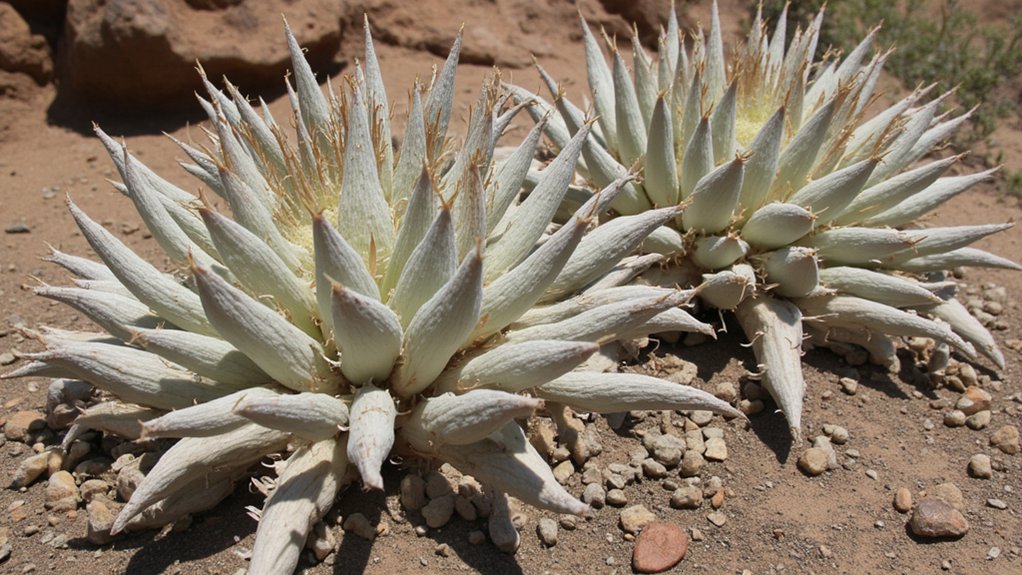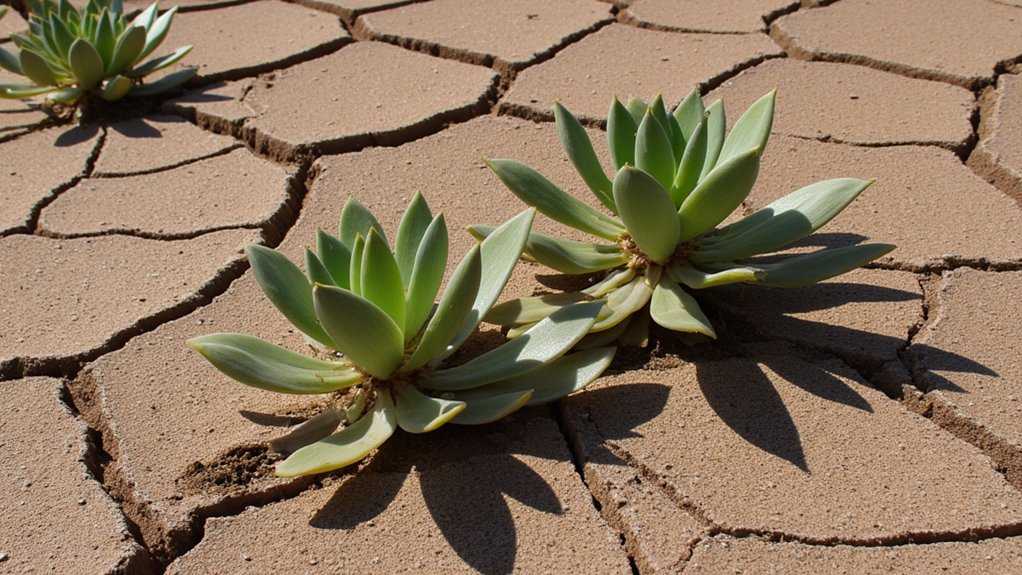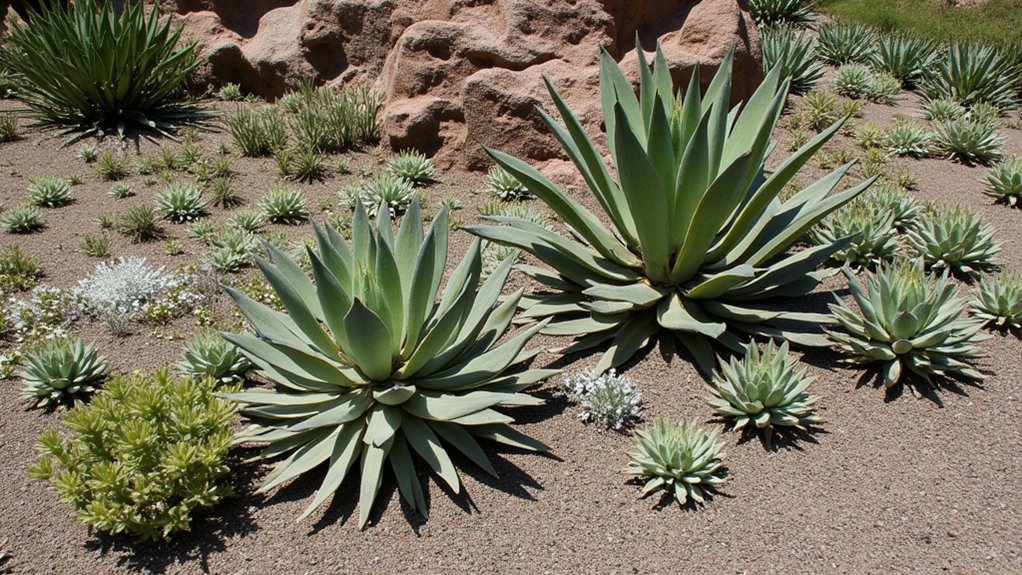You’ve likely noticed that some plants in your garden seem to flourish despite weeks of neglect. These resilient survivors have developed remarkable abilities through millions of years of evolution, from water-hoarding leaves to roots that can stretch 60 feet deep. While you might feel guilty about forgetting to water your plants, certain species actually prefer this hands-off approach – and the science behind their self-sufficiency reveals nature’s clever survival strategies.
Contents
Natural Defense Mechanisms of Resilient Plants

While many gardeners struggle to keep their plants alive, resilient species have evolved remarkable defense systems that help them thrive with minimal care. You’ll find these plants equipped with waxy coatings, tiny leaf hairs, and specialized cells that regulate water loss.
Their natural defenses often include thick leaves that store water for up to 3 months, and deep root systems that can extend 6-8 feet underground. Some plants even produce bitter compounds or calcium oxalate crystals that deter pests, while others have developed light-reflecting surfaces that prevent leaf burn in intense sunlight.
The Role of Water Stress in Plant Adaptation

Although plants naturally seek water to survive, moderate water stress can trigger remarkable adaptations that make them more resilient. You’ll notice these adaptations when you expose plants to controlled periods of drought, prompting them to develop deeper roots and thicker leaves.
During water stress, plants produce higher concentrations of abscisic acid, which helps them retain moisture by closing their stomata. They’ll also develop a thicker cuticle layer, reducing water loss through their leaves. You can encourage these adaptations by gradually reducing watering frequency, allowing roots to grow 4-6 inches deeper than usual.
Evolutionary Advantages of Minimal Care Species

Over millions of years, plants have evolved remarkable mechanisms that allow them to thrive with minimal human intervention. You’ll find that these hardy species have developed thick, waxy leaves to retain moisture, extensive root systems that can reach deep water sources, and specialized cells that store nutrients for lean times.
These adaptations aren’t accidents – they’re the result of natural selection favoring plants that could survive without perfect conditions. Some succulents can last 6 months without water, while desert-adapted species have developed leaves that fold inward to reduce water loss by up to 60%.
Interestingly, these low-maintenance traits often make plants more resistant to pests and diseases too.
How Nutrient Scarcity Shapes Plant Behavior
Since nutrients aren’t always readily available, plants have developed fascinating strategies to cope with scarcity. You’ll notice how some species extend their roots deeper or wider, maximizing their exposure to limited soil resources.
In response to phosphorus deficiency, many plants release organic acids that break down minerals, making nutrients more accessible. They’ll also form partnerships with beneficial fungi, creating an underground network that shares resources.
When nitrogen is scarce, certain plants become surprisingly resourceful. They’ll redirect energy from leaf growth to root development, and some species even trap insects as an alternative nutrient source.
Creating Self-Sufficient Garden Ecosystems
While many gardeners focus on individual plants, creating a self-sufficient ecosystem requires thinking holistically about your garden’s connections. You’ll want to layer your plants strategically, placing tall species like sunflowers at the back and ground covers in front.
Incorporate nitrogen-fixing plants, such as clover or beans, every 3-4 feet to naturally fertilize the soil. These plants convert atmospheric nitrogen into usable nutrients for their neighbors. Add flowering herbs between vegetables to attract pollinators.
Create microclimates by positioning large-leafed plants to shade moisture-loving species. You’ll find that once established, these interconnected plant communities need minimal intervention to thrive.
